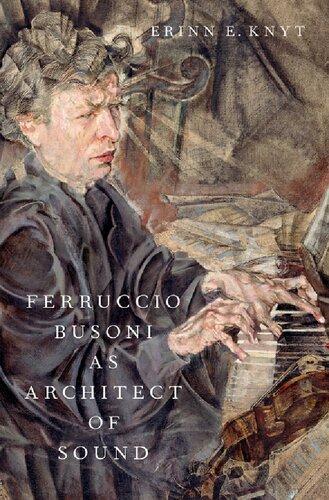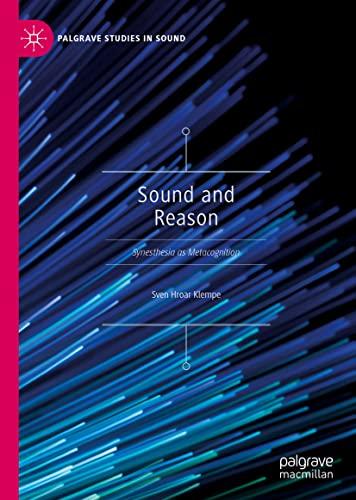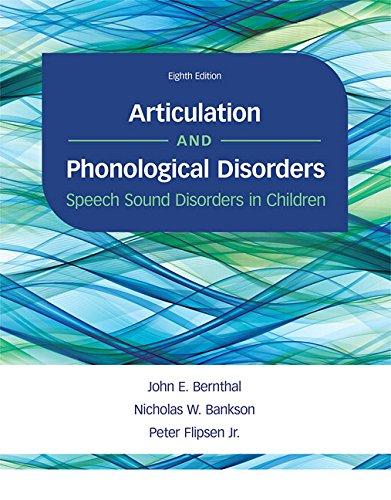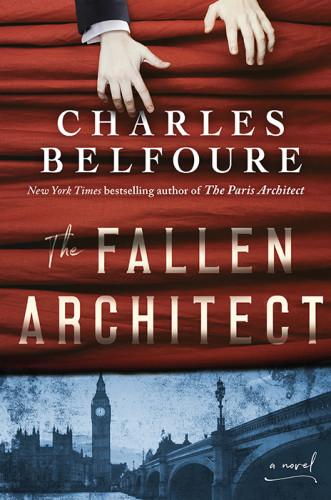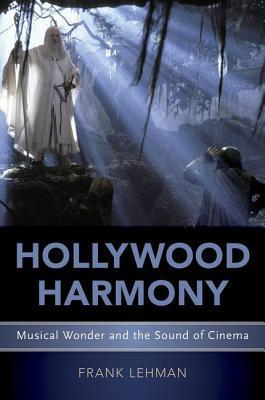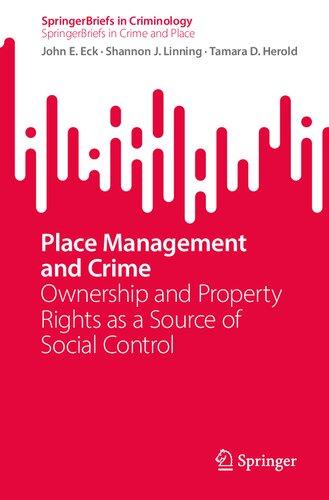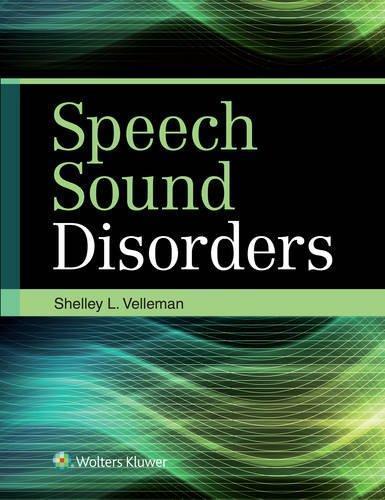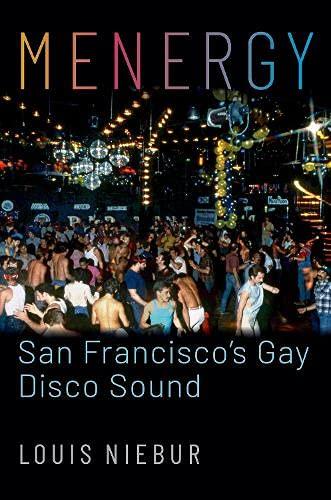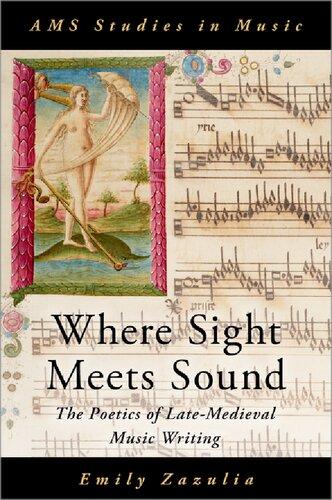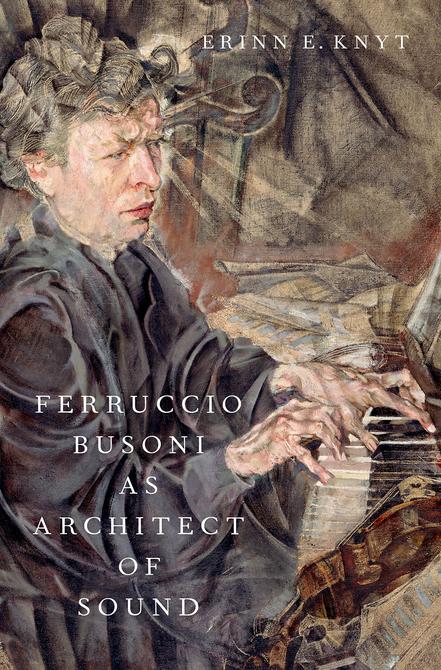List of Figures, Examples, and Tables
Figures
1.1. Busoni, sketch of a cathedral on the envelope from a letter by Max Reger of September 6, 1895, to Busoni 21
1.2. Busoni, list of architecture books in Busoni’s Zurich book collection 23
1.3. Busoni, diagram related to the formal structure of the Fugue in C Major from J. S. Bach’s Well-Tempered Clavier, book I 47
1.4. Photo of Ferruccio Busoni with Frederick August Stock, Wilhelm Middelschulte, and Georg Hütter, 1911 56
1.5. Photo of Henry van de Velde’s Bloemenwerf House, c. 1895 67
1.6. Program from the Weimar Bauhaus Week, August 18, 1923 73
2.1. Van de Velde’s Weimar-Haus Hohe Pappeln. View from the south. Bildarchiv Foto Marburg. Photographer unknown. Photograph from c. 1915 to 1917 94
2.2. Image of the Victoria-Luis-Platz on a postcard from 1908 95
2.3. Busoni, sketchbook, plans for the Piano Concerto in C Major, BV 247, indicating borrowings from Sigune, BV 231 100
2.4. Busoni’s drawing depicting the structure of the Piano Concerto, enhanced by Heinrich Vogeler 101
2.5. Busoni, diagram of the formal structure of Busoni’s Grosse Fuge: Kontrapunktische Fantasie uber Joh. Seb. Bach’s letztes unvollendetes Werk fur Klavier ausgefuhrt 110
2.6. Busoni, drawing illustrating the form of the two-piano version of the Fantasia contrappuntistica 111
2.7. Image of the Papal Palace at Avignon. Photograph in the Public Domain 112
2.8. Schlemmer’s ambulant architecture drawing in “Mensch und Kunstfigur” 116
2.9. Busoni, sketch of Arlecchino 119
2.10. Georg Muche, architect, Haus am Horn, from the 1923 Bauhaus Exhibition, Bauhaus-Archiv Berlin 136
3.1. Busoni, letter of January 7, 1920, to Gerda Busoni and Otto Amsler 165
3.2. Image of the Münster Cathedral Westwerk with Late Gothic portal from c. 1900 175
3.3. Busoni’s diagram of the visible and invisible stage (in the unpublished version) that he hoped music would encompass (Prospektus-Linie Bühne) 181
3.4. Busoni, pencil sketch to illustrate his plan for the staging of Bach’s St. Matthew Passion 186
3.5. Busoni’s proposed and rejected visions for the spatial theater of the future 188
3.6. Busoni, sketch for a theatrical space with a triple opening. From “Projekt für eine Dreifache Bühnenöffnung” (Zurich, 1918) 190
4.1. Photograph of the Boston Music Hall from c. 1900 197
4.2. Image of the Zurich Tonhalle from c. 1905 199
4.3. Busoni’s diagram illustrating the form of J. S. Bach’s Little Prelude in C Minor, BWV 999 212
4.4. Busoni, concert program, January 24, 1907 216
4.5. Busoni’s modification of the solo piano part of Mozart’s Piano Concerto in G Major, K. 453 219
5.1. Henrik Neugeboren (Henri Nouveau), proposal for a Bach monument based on mm. 52–55 of the E-flat Minor Fugue of J.S. Bach, designed in 1928 229
5.2. Vogel, arrangement of Ludwig van Beethoven’s Grosse Fuge for Two Pianos 234
5.3. Program for the composition recital by Busoni’s composition master class pupils on December 7, 1922 239
5.4. Vogel, Komposition für ein und zwei Klaviere, p. 1 241
5.5. Vogel, Sonata für ein und zwei Klaviere, p. 7 244
5.6. Photograph of Ferruccio Busoni in his apartment at Viktoria-Luise-Platz with some of his Berlin master class pupils (Kurt Weill, Walther Geiser, Luc Balmer, and Wladimir Vogel), c. 1923 252
5.7. Weill, Sonata for Cello and Piano (1920), mvmt. 1, p. 1 256
5.8. Varèse’s pyramid diagram from Berlin, 1910 277
5.9. Varèse, sketch for the end of Poème électronique 284
Examples
1.1. Middelschulte, Kanonische Fantasie über BACH und Fuge über 4 Themen von Joh. Seb. Bach, mm. 1–16 58
1.2. Busoni, “Preludietta,” An die Jugend, BV 254, mm. 1–12 70
1.3. Busoni, “Fughetta,” from An die Jugend, BV 254, mm. 1–18
1.4. Busoni, Piece no. 1 from the Fünf kurze Stücke zur Pflege des polyphonen Spiels, mm. 1–10. (Piece no. 2 from Sieben kurze Stücke zur Pflege des polyphonen Spiels) 80
1.5. Busoni, Piece no. 1 from the Fünf kurze Stücke zur Pflege des polyphonen Spiels, mm. 47–55. (Piece no. 2 from Sieben kurze Stücke zur Pflege des polyphonen Spiels) 81
2.1. Busoni, Piano Concerto in C Major, BV 247, mvmt. 3, mm. 46–53
2.2. Busoni, Piano Concerto, BV 247, mvmt. 1, mm. 1–2, viola part
2.3. Busoni, Fantasia contrappuntistica, BV 256b, mm. 24–33
2.4. Busoni, Arlecchino, Introduzione, mm. 1–13
2.5. Busoni, Doktor Faust, Wittenberg tavern scene, mm. 1–73
3.1. Busoni, Doktor Faust, Sinfonia, mm. 1–26
3.2. Busoni, Doktor Faust, Sinfonia, mm. 128–32
3.3. Busoni, Die Brautwahl, Cathedral scene, excerpt
3.4. Busoni, Sonatina in diem nativitatis Christi MCMXVII, mm. 118–23
3.5. Busoni, Doktor Faust, Intermezzo, piano score, mm. 1–30
3.6. Busoni, Turandot, Act I, “Lament,” mm. 1–14
4.1. Busoni’s arrangement of J. S. Bach’s Organ Prelude and Fugue in D Major, BWV 532, mm. 1–9
5.1. Vogel, Wagadus Untergang durch die Eitelkeit, no. 11, mm. 1–2
5.2. Weill, “Anstatt-Dass,” Die Dreigroschenoper, mm. 1–5
1.1. Weimar Bauhaus Week Program, 1923
1.2. Overall Structure of Busoni’s Sieben kurze Stücke zur Pflege des polyphonen
2.1. Diagram of Busoni’s Piano Concerto BV 247, mvmt. 3
2.2. Diagram of the Wittenberg Tavern Scene from Doktor Faust
3.1. Pieces with Offstage Instruments during Busoni’s Lifetime (1866–1924)
5.1. Selected Theatrical or Operatic Works by Weill
Acknowledgments
This book would not have been written without support from numerous scholars, colleagues, friends, and family members. I appreciate advice from colleagues at the University of Massachusetts Amherst, including Evan MacCarthy, Ernest May, Marianna Ritchey, Emiliano Ricciardi, Jason Hooper, Brent Auerbach, Gary Karpinski, Chris White, and Salvatore Macchia, some of whom listened to presentations or read chapter drafts. I am also thankful for encouragement from George Barth, Karol Berger, Anna Maria Busse Berger, Sandra Graham, Tom Grey, Heather Hadlock, Stephen Hinton, and Christopher Reynolds. I am particularly indebted to my editor, Norman Hirschy, for his advice and counsel, and to my anonymous readers for their valuable suggestions. This project would not have been as complete without assistance locating obscure letters, documents, and scores from people at the following institutions: Archives et Musée de la Littérature (Kosta Siskakis), Archivio storico comunale (Paola Furlan), Bauhaus-Archiv (Erika Babatz), Bildarchiv Foto Marburg (Annette Otterbach), Fotoatelier Louis Held (Stefan Renno), Klassik Stiftung Weimar (Christiana Herrgott, Evelyn Liepsch, and Sabine Walter), Kurt Weill Foundation (Dave Stein), Library of Congress (Paul Allen Sommerfeld), Mills College (Janice Braun), Paul Sacher Stiftung (Felix Meyer, Michèle Noirjean, and Heidy Zimmermann), San Francisco Conservatory of Music (Jeong Lee), Staatsbibliothek zu Berlin (Jean-Christophe Gero and Marina Gordienko), Stanford University (Leif Anderson, Ray Heigemeir, Jerry McBride, Tim Edward Noakes, and Larry Scott), The Rudolph Ganz Papers (Lisa Schoblasky), University of California at Berkeley (Dean Smith), University of Massachusetts Amherst (Erin Jerome and Anne Moore), Yale University Library (Jake Fewx and Jonathan Manton), and Zentralbibliothek Zürich (Heinrich Aerni). I am also grateful to the following people for sharing their memories about Egon Petri: Lois Brandwynne (University of California at Davis), Ken Bruckmeier, Daniell Revenaugh (d. 2021), and my former piano teacher, Julian White (d. 2006), who studied with Petri and spoke of him often during lessons. Special thanks are also due Benjamin Ayotte for his typesetting of the examples, to Timothy
DeWerff for his copyediting, and to Colleen Wetzel for her assistance in procuring sources.
This book would not have been possible without the generous support of a Faculty Research Grant from the University of Massachusetts Amherst. I would also like to thank my parents and parents-in-law for their support while traveling to archives. The unexpected loss of my father in December 2021 deserves special mention, and I am dedicating this book to him. Finally, I would like to express my deepest gratitude to my husband Eric, and to my children, for their patience as I worked on book drafts and went on numerous trips to archives and libraries.
Introduction
Ferruccio Busoni and Architecture
Deep and quiet, the pillars of rock begin to sound Adam Oehlenschläger, Aladdin (1808)1
While approaching death in spring 1924, Ferruccio Busoni (1866–1924) reportedly confessed to his pupil Gottfried Galston that it had been his dream from his youth to become an architect rather than a musician. However, as the son of two musicians, his path in life had seemed predetermined:
I wanted to become an architect, but how was it possible? The course was already fixed by the continuous directions, teachings, commitments, and models offered by my father—a clarinetist—and my mother—teacher of piano!2
1 [Die Felsensäulen fangen an tief und leise zu ertönen.] Adam Oehlenschläger, Aladdin oder die Wunderlampe: Ein dramatisches Gedicht in zwei Spielen (Amsterdam: Kunst und Industrie, 1808), 560. Quoted in Busoni, Piano Concerto, BV 247 (Leipzig: Breitkopf und Härtel, 1906), 294.
2 [Mein Wunsch ging dahin, Architekt zu werden. Aber wie sollte das kommen. War doch der Weg festgestellt durch die steten Unterweisungen, Lehren, Bemühungen und Vorbilder, die mir der Vater—Clarinettist—und die Mutter—Klavierlehrerin—ständig lieferten! So waren ja die Gleise gelegt und befestigt, und mein Schicksalsrad rollt sicher und unverrückbar in dieser Richtung.] Busoni, quoted in Gottfried Galston, diary entry of March 29, 1924, Kalendernotizen über Ferruccio Busoni, Taschenbücher zur Musikwissenschaft 144 (Wilhelmshaven: Florian Noetzel, 2000), 30. Busoni elaborated about his desire to become an architect in a memoir recorded by his friend, the architect Henry van de Velde. Van de Velde remembers that Busoni particularly disliked being promoted as a child prodigy—and it was in those instances that he most strongly hoped to switch to the field of architecture: “Busoni explained that when he felt an insurmountable reluctance to be shown to the public and the European Court as a child prodigy, such a passion for architecture arose in him, that he was ready to renounce music and to devote himself to architecture.” [Im Anschluss an eine diskrete Bemerkung seiner Frau erklärte Busoni, dass als ihn eine unüberwindliche abneigung ergriff, dem Publikum und den europäischen Höfen als Wunderkind vorgeführt zu werden, eine solche Leidenschaft für die Architektur in ihm erwachte, dass er bereit war, auf die Musik zu verzichten, um sich der Architektur zu widmen.] Henry van de Velde, Geschichte meines Lebens, ed. Hans Curjel (Munich: R. Piper and Co., 1962), 392–99/503.
Ferruccio Busoni as Architect of Sound. Erinn E. Knyt, Oxford University Press. © Oxford University Press 2023. DOI: 10.1093/oso/9780197625491.003.0001
Although Busoni never realized his dream of designing buildings, he became an architect of sound. Numerous references to architecture in his writings and letters reveal his fascination with architectural design, and he translated this knowledge into unconventional and multi-dimensional ways of sculpting sound and organizing pitches. An architectural mindset became scaffolding for the ways he approached music. Influencing elements from form to acoustics, harmony, color, treatment of the musical language, and timbre, his fascination with architecture led to compositional and interpretive experimentation.
While examining ways architecture inspired him, this book provides a long overdue assessment of Busoni as composer and arranger. When scholars mention him, they frequently note discrepancies between his compositional practice and his aesthetic theories. This book posits that Busoni was not only a radical thinker, but also an innovative and significant composer. Developments during the twentieth century included new means of pitch organization, the spatialization of sound, the expansion of formal structures, a new emphasis on tonal color, and novel treatments of the musical language. Busoni participated in these trends by writing pieces that feature sound radiating from different directions, montage formal structures, and the free use of all twelve pitches of the chromatic scale. When altering the music of others in live performances or in notated scores, Busoni modified the pitches, structure, and tone color to reflect his own ideals and the acoustic possibilities in the concert halls built during his lifetime. Thinking about the physicality of sound and the space it occupies expanded Busoni’s ideas about music organization, about tones and timbres, and about the spatial possibilities of music.
Busoni was fascinated by aspects of dimension and space, factors obvious in relation to buildings, which possess visible mass, but less so with music, where the materials are invisible; nevertheless, they still take the form of sound waves that can fill rooms and emanate from different directions. In 1907, Busoni compared different art forms, such as architecture, sculpture, poetry, painting, and music. He concluded that music was unique in its immateriality and abstractness, calling sound waves “sonorous air” that floats in space:3 “This child [music]—it floats on air! It touches not the earth with its feet. It knows no law of gravitation. It is well-nigh incorporeal. Its material
3 Busoni, Sketch of a New Aesthetic of Music, trans. Th. Baker (New York: G. Schirmer, 1911), 4.
is transparent. It is sonorous air.”4 While the other art forms took up physical space, and according to Busoni, imitated nature mimetically, music was more abstract and could travel freely: “Even the poetic word ranks lower in point of incorporealness. It [music] can gather together and disperse, can be motionless repose or wildest tempestuosity; it has the extremest heights perceptible to man—what other art has these?”5 That said, these waves could be translated into physical symbols that take up space on paper (if imperfectly), according to Busoni, and they emanate from physical beings and objects when they are conceived, delivered, and received.
Thinking about sound and the space it occupies expanded Busoni’s ideas about music organization, about tones and timbres, and about the spatial placement of sounds. And while some of his abstract notions of music and space transcended any physical boundaries, as he cried that music is “free (‘frei’),” some of his ideas about spatialized Tonkunst were more tangibly realized in relation to architecture.6 Busoni’s creative activities were informed by the study of buildings and floor plans as well as by the ideas of contemporary architects, such as Henry van de Velde and members of the Weimar Bauhaus. His approach to form resembles Jugendstil art and architecture in the 1910s and Bauhaus art, theater, and architecture in the 1920s. He drew architectural diagrams to describe his structural conception for pieces and the space they occupied. These diagrams represent a departure from linear notions of form as possessing a beginning, middle, and end. In some of his operas, architecture determined spatial aspects of the music and staging. In his arrangements, he imposed his own ideas about architectural shape on compositions of others to create unique structures. He also enlarged textures in the compositions of others to fill the large new concert halls in which he performed. Even despite the importance of architecture for Busoni’s work, scholars have only touched upon the topic lightly.7 Through close readings of his
4 Busoni, Sketch of a New Aesthetic of Music, 4. [Das Kind—es schwebt! Es berührt nicht die Erde mit seinen Füssen. Es ist nicht der Schwere unterworfen. Es ist fast unkörperlich. Seine Materie ist durchsichtig. Es ist tönende Luft. Es ist fast die Natur selbst. Es ist frei.] Busoni, Entwurf einer neuen Ästhetik der Tonkunst (Wilhelmshaven: Florian Noetzel, 2001), 12.
5 Busoni, Sketch of a New Aesthetic of Music, 5. [Selbst das dichterische Wort steht ihr an Unkörperlichkeit nach; sie kann sich zusammenballen und kann auseinanderfliessen, die regloteste Ruhe und das lebhafteste Stürmen sein; sie hat die höchsten höhen, die Menschen wahrnehmbar sind—welche andere Kunst hat das?] Busoni, Entwurf, 13.
6 Busoni, Sketch of a New Aesthetic of Music, 4.
7 Antony Beaumont, for instance, has written about the connection between Busoni’s architectural sketches and the Piano Concerto, BV 247. Beaumont, Busoni the Composer (Bloomington: Indiana University Press, 1985).
writings, music, and recordings, this book provides the first comprehensive view of how architecture informed his composition and performance approaches. In the process, the book reveals continuity among his activities as composer, arranger, performer, and thinker. At the same time, it reveals connections between music and architecture.
This book also addresses Busoni’s historiographic significance as a composer. Uncertainty about how to situate Busoni historically has led to neglect of his music in general. As Carl Dahlhaus has observed, he, along with one of his mentees, Jean Sibelius, does not fit easily in any historiographic categories. He cannot be clearly considered as either a progressive or a traditionalist: “Composers as Jean Sibelius and Ferruccio Busoni, undoubtedly belonged to the modernists—as they were understood at that time, but were afraid to take the final step towards new music; for critics unable to make an aesthetic judgment without first ascertaining their historical significance, they ended up in an aesthetic ‘no-man’s land’ by failing to conform to historiographical formulae.”8
Part of the confusion about Busoni’s historiographic significance can be attributed to the fact that he never broke with earlier musical traditions even as he wrote about and explored experimental ideas. That makes it difficult to understand his works in relation to much of the discourse about modernism in music.9 Many of Busoni’s contemporaries were also critical of the composer for his Janus-faced interest in and reliance on historical styles and tonality and his seeming failure to implement all of his radical aesthetic ideals. Arnold Schoenberg, for instance, was surprised by Busoni’s compositions, expecting a more direct break with past musical traditions based on his novel ideas about the future of music. On September 4, 1910, Schoenberg wrote to Busoni, requesting to see some pieces that more fully implemented his vision for new music: “And now something which I have long been meaning to ask
8 [Komponisten wie Jean Sibelius und Ferruccio Busoni, die zweifellos der Moderne—wie man sie damals verstand—angehörten, sich jedoch scheuten, den Schritt zur Neuen Musik zu vollziehen, gerieten für eine Kritik, die kaum noch ästhetisch zu urteilen vermochte, ohne sich des geschichtlichen “Stellenwerts” einer Erscheinung zu vergewissern, dadurch in ästhetisches Niemandsland, dass sie sich den historiographischen Formeln entzogen.] Carl Dahlhaus, Die Musik des 19. Jahrhunderts: Mit 75 Notenbeispielen, 91 Abbildungen und 2 Farbtafeln, Akademische Verlagsgesellschaft Athenaion (Wiesbaden: Laaber Verlag, 1980), 309.
9 Michael Levenson, for instance, has described modernism as involving new treatments of the tonal language and instruments, disunities, and experimentation, These were topics Busoni was interested in, wrote about, and practiced. Yet, these notions described by Levenson were often associated with historical rupture and a break with past traditions, such as tonality, which Busoni never wanted to do. Michael Levenson, “Introduction,” in The Cambridge Companion to Modernism, ed. Michael Levenson (Cambridge: Cambridge University Press, 1999), 3.
you. I would like to know some other works of yours. Those which actually put into practice what you have promised in your pamphlet [Sketch of a New Aesthetic of Music].”10 At the same time, Daniel Grimley has contended that, in spite of the fact that Busoni promoted the music of Carl Nielsen in Berlin, Nielsen “always seems to have had more respect for Busoni as a pianist than as a conductor or composer.”11 Even Sibelius considered many of Busoni’s compositions more traditional than his own works.12
In addition, while recent scholars have recognized the importance of Busoni’s ideas, they have not always given the same weight or attention to finding congruence between his compositions and his ideas. John Williamson, for instance, has written a compelling article about the uniqueness of Busoni’s vision of the musical work, but his writings focus predominantly on Busoni’s aesthetic writings, as opposed to his compositions.13 Martina Weindel has similarly written a very thorough text that focuses primarily on Busoni’s aesthetics.14 While comprehensive studies of Busoni’s compositions by Antony Beaumont and Larry Sitsky have done much to spread knowledge about his compositional output, they have primarily focused on the valuable activities of cataloguing, documenting, and analyzing his most important compositions, rather than in showing continuity between Busoni’s visionary ideas and his compositional practice.15 More recent studies have focused on issues of continuity between his ideas and musical practice, such as Paul Fleet’s study on phenomenology in the music and
10 Arnold Schoenberg, letter of September 4, 1910, in Ferruccio Busoni: Selected Letters, ed. Antony Beaumont (New York: Columbia University, 1987), 408.
11 Daniel M. Grimley, Carl Nielsen and the Idea of Modernism (Woodbridge, Suffolk: Boydell Press, 2010), 192. Grimley supports his statement with a quote from a diary entry of 1891. He does not provide additional assessments of Busoni from Busoni’s maturity. Nielsen dedicated his Symphony no. 2 “The Four Temperaments,” op. 16, to Busoni. Busoni was instrumental in having the piece performed in Berlin on November 5, 1903, by the Berlin Philharmonic Orchestra (with Nielsen conducting).
12 Jean Sibelius, entry of June 13, 1912, in Dagbok: 1909–1944, ed. Fabian Dahlström, Skrifter utgivna av Svenska litteratursällskapet i Finland 681 (Helsingfors: Svenska litteratursällskapet i Finland, 2005), 141.
13 John Williamson, “The Musical Artwork and Its Materials in the Music and Aesthetics of Ferruccio Busoni,” in The Musical Work: Reality or Invention?, Liverpool Music Symposium, ed. Michael Talbot (Liverpool: Liverpool University Press, 2000), 187–204.
14 Martina Weindel, Ferruccio Busonis Ästhetik in seinen Briefen und Schriften, ed. Richard Schaal (Wilhelmshaven: Heinrichsofen-Bucher, 1996). Albrecht Riethmüller has also explored Busoni’s aesthetics, but primarily in relation to specific music examples. While primarily exploring the ambiguous boundaries between transcription, arrangement, and compositions, as well as Busoni’s theories of Junge Klassizität, Riethmüller does not emphasize Busoni’s experimentation with the more experimental aspects covered in this book. Albrecht Riethmuller, Ferruccio Busonis Poetik, Neue Studien zur Musikwissenschaft 4 (Mainz: Schott, 1988).
15 Beaumont, Busoni the Composer; Larry Sitsky, Busoni and the Piano: The Works, the Writings, and the Recordings, Distinguished Reprints 3, 2nd ed. (Hillsdale, NY: Pendragon Press, 2009).
aesthetics of Busoni, or Tamara Levitz’s study on Busoni’s Berlin master class (1921–1924).16 However, this is just a beginning to scholarly discourse about a complex and varied topic.
Given that Busoni’s music did not easily fit within constructed historiographic models, it is not surprising that there is not even a single mention of Busoni in most major music history textbooks. When scholars mention his importance, it is usually in relation to his aesthetic ideas. Richard Taruskin, for instance, who is one of a few to even mention Busoni in histories of music, writes about him on two separate pages in his six-volume The Oxford History of Western Music, where he called him both a pianist and composer. Yet he noted that even though Busoni envisioned tripartite divisions of tones, “he made no move at all toward implementation.”17 Taruskin also notes his activities as a composition teacher in Berlin from 1921 to 1924, where he taught Weill, and briefly mentions his mentorship of Schoenberg.18 Yet not a single one of his compositions was discussed.
Busoni was thus not understood well by his own generation, because he was trying to reconcile musical traits associated with the traditions he knew and the experimental future he envisioned in a time when many of his contemporaries were either hanging on to tradition and looking to a new future with fear (as Hans Pfitzner), or else seeking to break with some past traditions to usher in a new future (as Schoenberg).19 His compositions have also not received the attention that they deserve in recent scholarship. Vânia Schittenhelm has claimed, however, that Busoni’s musical activities and his ideas were not irreconcilable.20 As Schittenhelm points out, much of the confusion over the relative merits of Busoni’s compositions comes from searching for a break with the past and with tonality rather than for experimentation with other factors; these include an experimentation with sound, an exploration of new ways of organizing music, an expansion of the musical language
16 Paul Fleet, Ferruccio Busoni: A Phenomenological Approach to His Music and Aesthetics (Cologne: Lambert Academic Publishing, 2009); Tamara Levitz, Teaching Young Classicality: Busoni’s Master Class in Composition, 1921–1924 (Frankfurt: Peter Lang, 1996).
17 Richard Taruskin, Music in the Early Twentieth Century, Vol. 4 of The Oxford History of Western Music (New York: Oxford University Press, 2010), 286. While it is true that he never composed pieces with microtonal divisions, he did commission instruments that did, and he inspired his students and followers to try them. For more information, see Erinn Knyt, Ferruccio Busoni and His Legacy (Bloomington: Indiana University Press, 2017), 107.
18 Taruskin, Music in the Early Twentieth Century, 539.
19 Vânia Schittenhelm, “The Dangerous Issue of Modern Music in the Controversy between Busoni and Pfitzner,” Electronic Musicological Review 2:1 (October 1997), http://www.rem.ufpr.br/ REM/REMv2.1/vol2.1/The_Dangerous_Issue.html (accessed August 7, 2019).
20 Schittenhelm, “The Dangerous Issue of Modern Music.”
without rejecting tonality (“metatonality”), and an expansion of the many varied timbral and registral hues.21 While he did not manage to successfully implement all of his ideas in his compositions, such as the use of microtones or electronic sounds (sometimes due to limitations in instruments and technology), he did implement some of them, such as an expansion of the musical language, and a new exploration of space and sound. In the process he helped create a significant, interesting, and innovative body of works.
Busoni’s works can be understood and contextualized in relation to recent scholarship that has expanded notions of musical modernism beyond an experimental treatment of the tonal language and ruptures with the past.22 Julian Johnson has claimed that there does not need to be a perception of a single narrative characterized by hard divisions between “conservative and progressive camps.”23 He maintains that there was actually a “co-existence and interaction of diverse stylistic practices, which, on closer inspection, begin to show some remarkable similarities.”24 Several other scholars have also recently identified multiple modernisms by differentiating between continental European modernism and slightly different approaches employed by Nordic and British composers, in particular. They have, for instance, written about Sibelius, Nielsen, and Edward Elgar, among others, placing them within discourse about a plurality of styles characterized in many cases, by modification of past traditions in new ways.25 As Jenny Doctor has shown, in Great Britain, and even into the post–World War I era, traditionalisms and experimentation existed side by side. She argues that music of the era can sometimes include “modifying” traditions, not just “overturning” them.26
21 Fleet has used the term “metatonality” to describe Busoni’s approach. See Fleet, Ferruccio Busoni
22 For a survey of uses of the term “modernism,” see Susan Stanford Friedman, “Definitional Excursions: The Meanings of Modern/Modernity/Modernism,” Modernism/Modernity 8:3 (2001): 493–513. See also Matthew Riley, “Introduction,” in British Music and Modernism, 1895–1960, ed. Matthew Riley (Burlington, VT: Ashgate, 2010), 1–11.
23 Julian Johnson, Out of Time: Music and the Making of Modernity (New York: Oxford University Press, 2015), 7–8. For more scholarship about the topic, see also Karol Berger, Bach’s Cycle, Mozart’s Arrow: An Essay on the Origins of Musical Modernity (Berkeley: University of California Press, 2007); Karol Berger, Anthony Newcomb, and Reinhold Brinkmann, eds., Music and the Aesthetics of Modernity: Essays (Cambridge, MA: Harvard University Department of Music, 2005); John Butt, Bach’s Dialogue with Modernity: Perspectives on the Passions (Cambridge: Cambridge University Press, 2010).
24 Johnson, Out of Time, 7–8.
25 See, for instance, James Hepokoski, Sibelius: Symphony No. 5 (Cambridge: Cambridge University Press, 1993); J. P. E. Harper-Scott, Edward Elgar, Modernist (Cambridge: Cambridge University Press, 2006); Grimley, Carl Nielsen and the Idea of Modernism
26 Jenny Doctor, “The Parataxis of ‘British Musical Modernism,’” Musical Quarterly 91:1–2 (Spring/ Summer 2008): 89–90/110. In this quote, Doctor is also drawing from scholarship by Peter Childs, Modernism (London: Routledge, 2000), 4.
Grimley has also similarly described aspects of modernism in music as characterized by fragmentation and instability that ultimately leads to regeneration and change, such as in the music of Nielsen.27
Although the scholars mentioned above have recently sought to create multivalent and pluralistic accounts of modernism in music that move beyond notions of rupture with the past as well as beyond musical autonomy and elitist exclusivity or esotericism, Busoni’s place has yet to be established or discussed in detail.28 Moreover, the scant scholarly discourse about Busoni and modernism still focuses on aspects of his musical writing that is tied to the past, as opposed to his equally interesting quests to modify the traditions he venerated in order to write new and experimental music.
Walter Frisch, who is one of the few to discuss Busoni in relation to musical modernism, has also called for many alternate understandings of modernism, even within the works of European continental composers. As Frisch notes:
Most accounts of Austro-German music from about 1885–1915, or roughly from the death of Wagner until the start of World War I, still tend to focus on chromaticism and atonality as the barometers of emergent modernism. Only more recently have we begun to understand that early modernism was a many splendored thing, not restricted to late Mahler, Schoenberg and his pupils, and Strauss through Elektra.29
He sought to broaden the concept in a number of ways, including in describing one modernist approach that does not reflect a rupture with the past. This concept of “historicist modernism” is in line with a notion of modifying tradition, as opposed to rejecting it. Frisch describes “historicist modernism” as “music written around 1900 that derives its compositional and esthetic energy not primarily from an impulse to be New, but from a deep and sophisticated engagement with the music of the past.”30 At the same time, he views “historicist modernism” not as nostalgia for the past, but as
27 Grimley, Carl Nielsen and the Idea of Modernism, 237.
28 Björn Heile and Charles Wilson, “Introduction,” in The Routledge Research Companion to Modernism in Music (London: Routledge, 2019), 1.
29 Walter Frisch, “Reger’s Bach and Historicist Modernism,” 19th-Century Music 25:2–3 (2001): 296.
30 Walter Frisch, German Modernism: Music and the Arts (Berkeley: University of California Press, 2005), 139.
the use of musical techniques from the past as a way to create some distance from late romantic styles.
Although Busoni is of mixed Italian-German heritage, Frisch discussed him in his book on German modernism and has called Busoni a “historicist modernist.” In doing so, he grouped Busoni together with other continental German or Austrian composers such as Johannes Brahms and Max Reger. He has observed that even in Germany, “technically advanced language and a clear sense of moving away from the past” is only a part of musical modernism.31 Frisch argues that composers such as Brahms, Reger, and Busoni used techniques of the past to serve original approaches toward musical language. Frisch was particularly interested in how these composers alluded to Bach, not in a retrogressive way, but as muses as they adapted older styles for a new age, even as Bach was seen as restorative in an era of decadence and extravagance. As examples, Frisch cited the final movement of Brahms’s Symphony no. 4 in E minor, op. 98, and numerous pieces by Reger, including his Variations and Fugue on a Theme of Bach, op. 81.
Unlike Neoclassical music, where evocations of the past are frequently alienated from newer defamiliarized treatments of the musical languages, this “historicist modernism” approach allows the past to be part of the present in a continuous way, and without a sense of rupture. Frisch specifically notes that in the Variations and Fugue on a Theme of Bach, op. 81, Reger composes in such a way that it not only acknowledges the past, but also introduces a kind of fragmentation and temporal layering that “composes out the distance” between the composers and eras.32
Drawing on Albrecht Riethmüller’s analyses of Busoni’s music, Frisch also describes the appearance of his concept of “historicist modernism” in the third movement of Busoni’s Violin Sonata no. 2, BV 244 (1900), which is a set of Beethovenesque variations featuring Bachian chorale motifs. He also notes Busoni’s use of the fugue and chorale in the Fantasia contrappuntistica, BV 256, as indicative of “historicist modernism.”
While Frisch’s discussion of Busoni’s position in musical modernism is a valuable and much-needed start to considering Busoni’s place in historiographic narratives, it also limits the discussion to one aspect of Busoni’s approach and to a narrow part of Busoni’s output. Part of the limitation is caused by the scope of Frisch’s project, which focuses on music composed
31 Frisch, German Modernism, 4.
32 Frisch, “Reger’s Bach and Historicist Modernism,” 312.
before 1915, and thus misses some of Busoni’s more mature and experimental approaches during and after World War I until the time of his death in 1924. In addition, Frisch’s emphasis on the Bach connection necessarily leaves out other important aspects of Busoni’s compositional style, including his interest in contemporaneous ideas about new instruments, new scales, and general musical experimentation, as well as on his simultaneous allusions to Mozart. In focusing on a few pieces, and on historical connections to Bach, Frisch presents only a limited view of Busoni’s compositional activities, one that emphasizes his connections to the past, as opposed to his equally strong experimental side. It obscures his interest in experimenting and modifying tradition in new ways to evoke a new future of music characterized by unique approaches to form, timbre, color, and space.
This book builds upon Frisch’s ideas by presenting a broader view of Busoni’s compositional activities as not only intimately connected to history (and not just the music of Bach), but also as closely aligned with a contemporary interest in experimentalism and in finding new ways to combine the materials of music in relation to other art forms. In doing so, it presents a more comprehensive portrait of the composer’s compositional interests. It shows that even if Busoni did not call for a rupture from previous eras, as many early twentieth-century composers did, he still contributed to other related ideals of fragmentation, a bringing together of the arts, an expansion of the tonal language, an exploration of new formal structures, and an enlargement of space, color, and sound. In the process, it presents Busoni’s approach as multifaceted, and situates Busoni’s idiosyncratic musical voice among the plurality of musical modernisms that is beginning to be discussed.33
Moreover, it shows that Busoni’s approach was firmly rooted in a contemporaneous interest in blending the arts in the early twentieth century. As Daniel Albright has already revealed, there was a tendency of the arts to lean toward each other in the early twentieth century.34 Albright maintains that both temporal (i.e., poetry and music) and spatial (i.e., painting and
33 It is possible that Busoni’s mixed Italian-German heritage contributed to his idiosyncratic approach to modernism, but that topic is beyond the scope of this project. For more information about Busoni’s heritage, see Knyt, “Ferruccio Busoni and the Liceo musicale di Bologna: Transnationalism and Italian Musical Culture,” Music and Letters 99:4 (November 2018): 303–26; Martina Weindel, “Ferruccio Busoni und der Nationalismus,” in Italian Music during the Fascist Period, ed. Robert Illiano (Turnhout: Brepols, 2004), 283–99.
34 See, for instance, Daniel Albright, Untwisting the Serpent: Modernism in Music, Literature, and Other Arts (Chicago: University of Chicago Press, 2000); Albright, Putting Modernism Together: Literature, Music, and Painting: 1872–1927, Hopkins Studies in Modernism, ed. Douglas Mao (Baltimore: Johns Hopkins University Press, 2015).
architecture) art forms collided and combined in modernist music and art in unprecedented ways to form new “panaesthetic whole[s].”35 He goes on to state that “on the one hand [they] retain their distinctness; on the other hand, they collapse into a single spatiotemporal continuum, in which both duration and extension are arbitrary aspects.”36 Albright contends that this “collaboration among several arts is at once a labyrinth and a thread that needs to be followed.”37 He convincingly describes many varied ways the arts collide in the modernist era through specific case studies of numerous artists, authors, and painters, including Kurt Weill, one of Busoni’s pupils, who explored intersections between gestus and music. Yet Albright’s text could not possibly cover every example, and it did not mention similar approaches in the works of Weill’s teacher, Busoni, a lacuna this book hopes to fill.
Busoni explores resonances between art forms that forge unique intersections between artistic autonomy and social functionality, between form and content, between space and time, and between known history and the unknown future and experimentation. In bringing together different art forms, he was very much part of his era. Yet even if Busoni joined other contemporaneous composers in exploring interactions between the arts to inspire new compositional approaches, the specific architectural-musical thinking of Busoni was unique and contributed to an idiosyncratic view of music with respect to the relationship between form and material, in particular, but also in relation to issues of artistic autonomy and ontology. In particular, he argued for the uniqueness and independence of music as an art form, but at the same time insisted that it was informed by the human ideas and experiences of the creator. In this, he forged a middle ground between notions of absolute musical autonomy and extra-musical ideas.38
35 Albright, Untwisting the Serpent, 33.
36 Albright, Untwisting the Serpent, 33.
37 Albright, Untwisting the Serpent, 33. For additional literature on modernism, see Christopher Butler, Early Modernism, Literature, Music, and Painting in Europe, 1900–1916 (Oxford: Clarendon Press, 1994); Joseph Straus, Remaking the Past (Cambridge: Cambridge University Press, 1990); Rebecca Walkowitz, Cosmopolitan Style: Modernism Beyond the Nation (New York: Columbia University Press, 2012); Carol J. Oja, Making Music Modern: New York in the 1920s (Oxford: Oxford University Press, 2000); Matei Câlinescu, Five Faces of Modernity: Modernism, Avant-Garde, Decadence, Kitsch, Postmodernism (Durham, NC: Duke University Press, 1987); Jürgen Habermas, The Philosophical Discourse of Modernity, trans. Frederick Lawrence (Cambridge, MA: MIT Press, 2000); Richard Taruskin, The Danger of Music and Other Anti-Utopian Essays (Berkeley: University of California Press, 2008); David Roberts, The Total Work of Art in European Modernism, Signale: Modern German Letters, Cultures, and Thought (Ithaca, NY: Cornell University Press, 2011).
38 For more information, see Knyt, “Ferruccio Busoni and the Absolute in Music: Nature, Form, and Idee,” Journal of the Royal Musical Association 137:1 (May 2012): 35–69.
In order to document the resonances between the art forms Busoni explored, this book clarifies the extent of Busoni’s interest in architecture as well as his exposure to philosophers, architects, architectural historians, and musicians that were also interested in related topics. In addition, it documents his interactions with Henry van de Velde and faculty members at the Bauhaus to reveal fascinating cross-disciplinary exchanges of ideas. It also shows how these interactions impacted his novel ideas about space, timbre, and form as a composer and as an arranger of the music of others. It highlights his exploration of overtones, terraced sound, an expansion of timbral possibilities, and structural form. Through architectural analogies, the composer moved beyond a three-dimensional notion of music as harmony and melody moving in time. He pioneered a multi-dimensional view of music inspired by architecture that led to concepts of organized sound, structural and assemblage forms, omnidirectional theater, and unlimited tonal, registral, and harmonic colors and hues. In practice, he envisioned ways that musical sound could fill up physical spaces, and he emphasized color and timbre through terraced approaches to pedal and dynamics. In the process, Busoni not only had a major influence on the spatialized music of the next generation of composers and performer-composers, such as Edgard Varèse, Stefan Wolpe, Wladimir Vogel, Egon Petri, and Kurt Weill, but also anticipated many of the textural, spatial, collage, and spectral experiments that were yet to come. As this book suggests, the long-term impact of his ideas on musical theater and opera, on the expansion of means of musical organization, and on the enlargement of concepts of sounds and colors reveals that he participated in the modernism of his own generation even as he played a more prominent role in the multivalent developments of music than previously understood.
Overview of Chapters
Throughout five chapters, this book explores the multiple ways architectural space, form, and design impacted Busoni’s compositional style and experimentation. In the process it elucidates some of the more original aspects of his creative output, including the expansion of tonality, the spatialization of sound, and multi-dimensionality of form. In this way it also adds to everbroadening scholarship on the topic of a melding of art forms in the era of modernism. In doing so, it reassesses Busoni’s position in the historiographic
narrative and in relation to current discourse about a plurality of modernisms in music.
Chapter 1 documents Busoni’s extensive knowledge of architectural styles through analyses of letters, essays, drawings, and other documents, some unpublished. His connections with architects at and beyond the Weimar Bauhaus also indicate a rich exchange of ideas. In addition, this chapter documents how the composer’s use of architectural metaphors, such as Gothic architecture in reference to Bachian polyphony, and Hellenic architecture in reference to Mozartian clarity of form, participated in and expanded upon ideals of his age In particular, it shows that he not only mentioned these metaphors, but also used them to inform some of his original aesthetic theories, such as Young Classicality, which blended Gothic and Hellenic ideals to generate a visionary music of the future characterized by melodiousness, as intersections of independent voices create new harmonies, scales, and textures. The chapter explains Busoni’s metatonal approach not as retrogressive, but as an expansion of the diatonic tradition. It also reveals ways Busoni realized these ideals in his An die Jugend, BV 254, and his Fünf kurze Stücke zur Pflege des polyphonen Spiels, BV 296, some of which were performed at the Bauhaus exhibition in Weimar in 1923.
Chapter 2 unveils Busoni’s evolving approach to musical structure. Through close readings of letters, drawings, programs, memoirs, and sketches in conjunction with analyses of Busoni’s compositions, this chapter reveals how architecture provided Busoni with ideas about how to move beyond traditional formal models to create new structures. Busoni sought inspiration in natural and architectural forms in the early 1900s; in the 1910s he created architectural montage structures. In the 1920s, his structures also included the fragmentation and combination of small discrete forms in a cubist manner. Furthermore, the chapter documents how architectural principles provided Busoni with ideas about how to move beyond traditional formal models to achieve these new structures. In two pieces, the Piano Concerto, BV 39 (1906), and the two-piano version of the Fantasia contrappuntistica, BV 256b (1922), Busoni illustrated his conception of the compositional structures with architectural drawings. In these and other instances, specific architectural styles were catalysts for his idiosyncratic formal approaches. Furthermore, the chapter reveals parallels between Busoni’s ideas and those at the Weimar Bauhaus. In particular, it shows similarities between Oskar Schlemmer’s “ambulant architecture” in the Triadisches Ballet and Busoni’s textural layering in Arlecchino, BV 270, as well as between the Haus am Horn
at the Bauhaus, where the square became a fundamental shape that was recombined in numerous ways to create the larger structure, and the combination of small forms into larger structures in Busoni’s Doktor Faust, BV 303 In the process, the chapter reveals how a blending of ideals from different art forms led to an idiosyncratic approach to form and how shared early twentieth-century artistic ideals spanned across disciplines.
Chapter 3 discusses Busoni’s spatialization of sound. It delineates his knowledge about physical space and architectural multi-dimensionality, documenting how it influenced his decisions about timbre, placement of instruments, and dramaturgy. His compositions from the 1910s and 1920s feature sound radiating from different directions, textural layering, and evocations of depth and height through a play with register, timbre, acoustics, and time. Many of his aesthetic ideas were based on metaphysical notions of inaudible sound in the universe that he translated into spatialized audible sound using the model of physical space in architectural buildings. For instance, Busoni re created the sounds associated with particular architectural building styles, such as cathedrals. He also posited novel theories about how music could encircle a stage and envelope listeners as it emanated from different locations simultaneously (i.e., below the stage, behind the stage, above the stage, in front of the stage, etc.). Architectural drawings for novel theatrical spaces, such as a triple stage opening inspired by Henry van de Velde, or a multilevel stage area, although never realized, informed his ideas about spatial instrument placement and inspired simultaneity of musical textures in Doktor Faust.
Chapter 4 documents the role Busoni’s architectural conceptions played in his arrangements of the music of other composers in response to the reverberant and large concert halls erected during his lifetime. It specifically delineates how he shaped other composer’s pieces aurally into monumental and multi-dimensional sound structures. “Colossal,” “monumental,” and “architectural” are common metaphorical descriptors for Busoni’s interpretations, which featured the use of arm weight, the back, and the whole body. These descriptors were also commonly applied to those of the emerging Russian School, in particular, Anton Rubinstein, due to his lengthy concert programs and massive tone. Yet Busoni also arranged and re created pieces, such as J. S. Bach’s “Goldberg Variations,” altering them structurally according to his idiosyncratic conceptions that have been compared to architecture in terms of scope and structure. Similarly, he grouped together romantic miniatures by Chopin and Liszt into monumental cycles,
by playing complete sets of preludes, etudes, or other pieces without break, while creating an overall shape to the pieces. The chapter reveals that Busoni also evoked architectural features and multi-dimensional sounds when he avoided the popular practice of fine nuance and linear playing in favor of a terraced approach, characterized by sudden changes in tempo, color, and touch. This created an aural impression analogous to structural blocks and multi-dimensionality even as he altered other’s compositions in real time. In addition, he enriched chords and added octave doublings to provide aural height and depth.
Chapter 5 documents the lasting importance of Busoni’s compositions, arrangements, and teachings about architecture for his mentees. This chapter primarily traces his influence on the mentees he invited to the Bauhaus exhibition of 1923, Egon Petri, Wladimir Vogel, Kurt Weill, and Stefan Wolpe. This “field trip” proved to be a climactic moment for Busoni’s closest mentees and composition master class pupils, helping them solidify their understanding of his teachings about spatial forms and sounds. Soon thereafter, Vogel started composing pieces that explored textural means of organization as well as spatialized sounds in choral ensembles and polyphonic speech choirs. He explored aural space in terms of register and timbre. Weill’s mixed-genre multi-dimensional montage forms based on a notion of Urform stem from Busoni’s formal teachings and were based on Busoni’s own operas. Moreover, Wolpe pioneered spatial approaches to music, including geometric pitch relations. At the same time, Petri also adopted a terraced approach and further cultivated Busoni’s notions of architectural shape and sonorous color in his re creations of others’ music. As the chapter reveals, Busoni’s teachings about music also influenced the work of film artist Hans Richter and visual artist Henrik Neugeboren, who cite his views about musical counterpoint as impacting the direction of their art. Yet, as the chapter shows, Busoni’s earlier composition mentees, that is, those he mentored prior to the Berlin composition master class (1921–1924), such as Varèse, also assimilated Busoni’s ideas about spatialized sound, thereby revealing continuity in his teachings. Varèse’s most obvious melding of spatialized sound, architectural space, and music was his Poème électronique, composed in conjunction with Le Corbusier and Iannis Xenakis for the Brussels World Fair in 1958. However, he wrote spatialized music long before that, and, as this chapter reveals, Busoni was a primarily catalyst for this.
In documenting the ways Busoni foresaw and propagated an interest in spatialized sound, multi-dimensional forms, and metatonal treatments of
